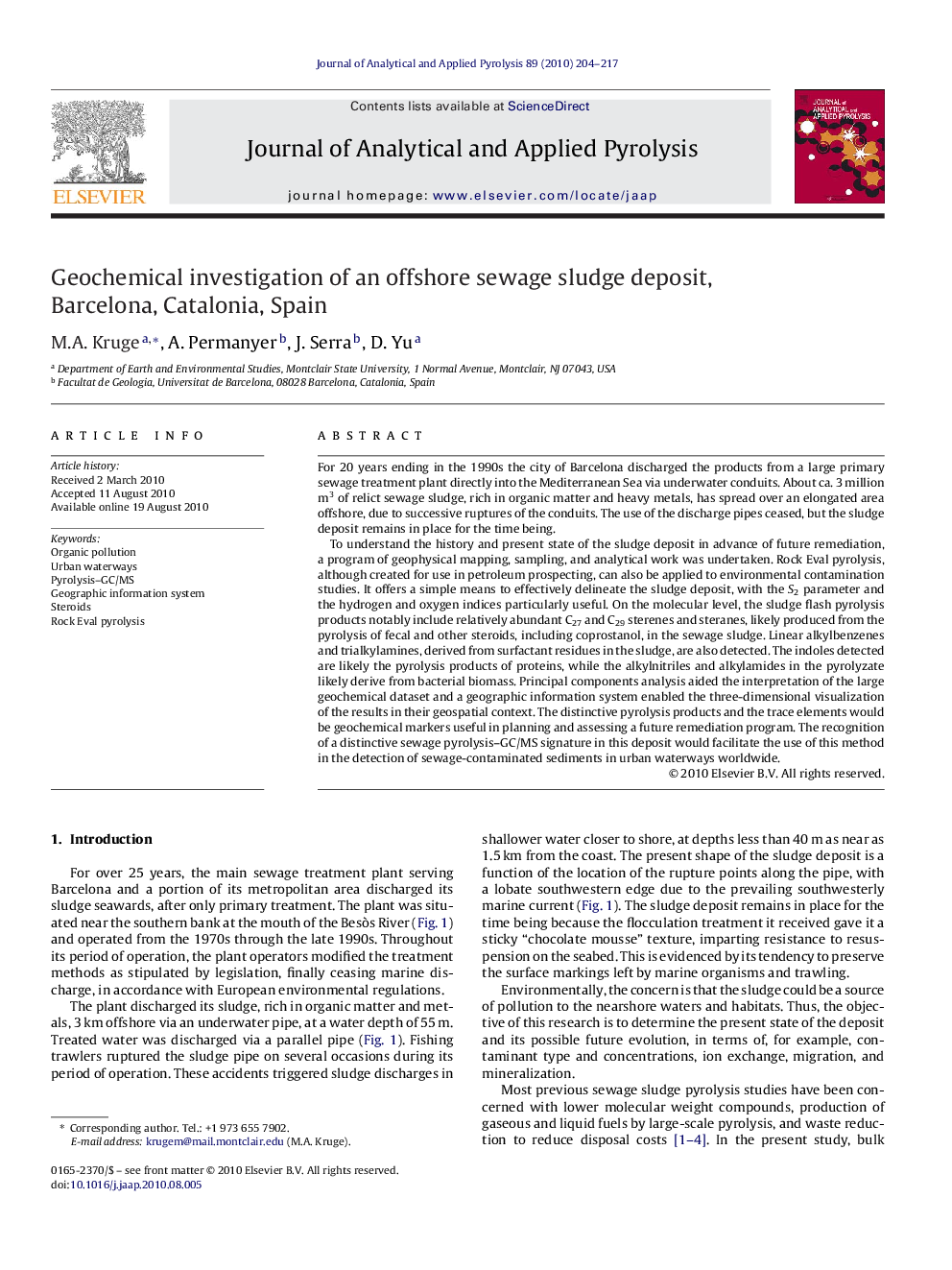| Article ID | Journal | Published Year | Pages | File Type |
|---|---|---|---|---|
| 1197633 | Journal of Analytical and Applied Pyrolysis | 2010 | 14 Pages |
For 20 years ending in the 1990s the city of Barcelona discharged the products from a large primary sewage treatment plant directly into the Mediterranean Sea via underwater conduits. About ca. 3 million m3 of relict sewage sludge, rich in organic matter and heavy metals, has spread over an elongated area offshore, due to successive ruptures of the conduits. The use of the discharge pipes ceased, but the sludge deposit remains in place for the time being.To understand the history and present state of the sludge deposit in advance of future remediation, a program of geophysical mapping, sampling, and analytical work was undertaken. Rock Eval pyrolysis, although created for use in petroleum prospecting, can also be applied to environmental contamination studies. It offers a simple means to effectively delineate the sludge deposit, with the S2 parameter and the hydrogen and oxygen indices particularly useful. On the molecular level, the sludge flash pyrolysis products notably include relatively abundant C27 and C29 sterenes and steranes, likely produced from the pyrolysis of fecal and other steroids, including coprostanol, in the sewage sludge. Linear alkylbenzenes and trialkylamines, derived from surfactant residues in the sludge, are also detected. The indoles detected are likely the pyrolysis products of proteins, while the alkylnitriles and alkylamides in the pyrolyzate likely derive from bacterial biomass. Principal components analysis aided the interpretation of the large geochemical dataset and a geographic information system enabled the three-dimensional visualization of the results in their geospatial context. The distinctive pyrolysis products and the trace elements would be geochemical markers useful in planning and assessing a future remediation program. The recognition of a distinctive sewage pyrolysis–GC/MS signature in this deposit would facilitate the use of this method in the detection of sewage-contaminated sediments in urban waterways worldwide.
